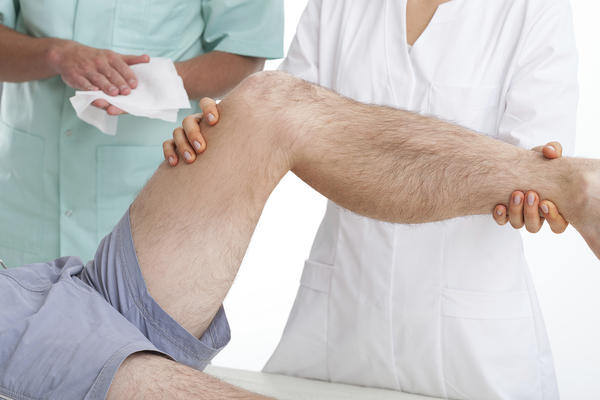Normal walking exerts pressure on the knee joint equivalent to about twice the body weight. Walking uphill or doing exercise increases this load even more. It is not surprising, therefore, that knee joints come under pressure, and are subject to problems and pain when things go wrong. Problems with knee joints can range from troublesome and temporary to debilitating and permanent, the latter having a real impact on quality of life.
Diagnosis of the Pain
An indication of a knee problem may be given by the age and activity level of the sufferer; for example an older person may be more likely to be subject to ‘wear and tear’ type damage such as arthritis, although this is not always the case since younger people can also develop the condition.
Knee Pain Location
The knee joint is like a hinge which is held together by tendons and lubricated by synovial fluid. Pain can occur at the front of the knee (kneecap), the sides or the back of the knee joint.
Front of the Knee
Here the kneecap (patella) lies at the front of the joint over the lower end of the thigh bone (femur). Pain here may be due to one of the several conditions caused by the breakdown of insulating material between two adjoining surfaces; one such condition may be inflammation of the bursa which is a fluid filled sac allowing the skin to move against the bone at the front of the knee. Alternatively pain may be due to the wearing away of cartilage between the femur and tibia as in osteoarthritis. Osteoarthritis is different from rheumatoid arthritis, the latter being a disease in which the body attacks its own joints resulting in inflammation and swelling around the joint.
Pain around and under the patella is due to damage to the cartilage on the underside of the patella; this cartilage normally allows the patella to move smoothly over the femur. However, when the cartilage is damaged, there is irritation to the underside of the patella. This condition, known as Chondromalacia, can affect older people due to natural wear and tear, or the young as the result of an injury.
Sides of the Knee
The most likely cause of pain to the sides of the knee is a tear in the meniscus. There are two menisci which are triangular pieces of cartilage located at the junction between the femur and the large bone of the lower leg, the tibia. The menisci form a cushion between these two main bones and support them in place. If the menisci are damaged it will allow the femur and tibia to misalign and possibly lock, reducing movement of the limb. Pain on the outside of the knee may also be due to inflammation of a thick band of tissue called the iliotibial band which runs from the thigh to the tibia down the outside of the knee and stabilises the knee joint. Arthritis also affects the side of the knee joint.
Back of the Knee
Arthritis will also cause pain to the back of the knee, but another possible problem in this area is caused by a buildup of excess synovial fluid which forms a cyst called a Baker’s Cyst. This accumulation of fluid may be due to accidental damage to the knee joint or due to arthritis.
Intensity and Type of Pain
A sudden sharp pain to the knee may be the result of a sprain where the tissues have been overstretched and, if this goes away quickly, there is no need to see the doctor. However, a sharp pain which does not go away or a continuous dull ache in the joint may be an indicator of a more serious problem and should be investigated. Also any lack of mobility, stiffness or swelling of the knee joint may be the result of damage to the menisci or cartilage and should be similarly investigated.
What to do
Although the location of the pain is a first indicator of the possible causes of a knee problem, the true nature of the problem cannot be diagnosed with certainty until further investigation by some form of imaging investigation such as an x-ray or CT scan, which shows the bones, or an MRI scan which shows the cartilage.
In the cases of a knee problem, the cause of which is not immediately obvious, it is always advisable to contact your doctor. After consulting with your doctor and identifying what causes your knee pain, it could lead to a knee replacement surgery if necessary. Your doctor will tell you why you’ll need it and will advise you to do pre knee replacement exercises to prepare your joints and bones.
Find out more here about knee replacement surgery and what it can mean to you.

